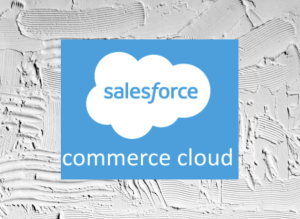Introduction
AWS is bringing its core technologies into enterprise data centers and to the Edge. This move dramatically increases the reach and range of AWS, and is the start of an era of hybrid computing. Wikibon projected that AWS would announce AWS hardware on customer presumes back before 2016. Wikibon projects that AWS Outposts will be wildly successful.
AWS also announced a slew of products that will enable IoT computing to be pushed out on the Edge. These include open source Neo as part of Amazon SageMaker. Neo will allow the SageMaker AI models to be exposed as inference code which can be run on a broad variety of Edge devices and and chip sets. AWS have made good progress on Edge computing, but still much innovation required.
What are AWS Outposts?
- AWS is offering the same EC2 cloud instances on customer premises or in a (say) Equinix managed data center. If (say) some C5 EC2 instances with x86 chips are required together A1 EC2 with Graviton chips from Annapurna to run workloads/services on premise, they will all be delivered in an AWS Outpost.
- The hardware will be identical to the same EC2 instances deployed by AWS in a cloud Region.
- AWS Outposts are offered as a service, and are owned by AWS. The customer is responsible for power, network connectivity, and (probably) racks. AWS is responsible for all software (e.g., patching) and hardware errors.
- AWS may offer ruggedized Outposts EC2 instances for environments such as factories.
- The AWS Outposts will include the same tamper-resistant technology as implemented on AWS Snowball.
- The EC2 instances are managed by the same control plane as cloud instances, and connection will be constant in most cases. The location of the EC2 instance is the only difference. Metadata about the EC2 instances is held in the AWS Cloud.
- The services and APIs running on Outposts will be exactly the same as those running in the cloud. AWS stated that there would be no service or API code forks.
- Not all EC2 instances will be available in all locations. Not all instances will be available at the beginning. The AWS intent is to increase the number of instances offered and location coverage is expected to improve rapidly.
- There is no capability to decrease usage on AWS Outposts, and (obviously) increased usage beyond the capacity of the Outposts. If appropriate, and latency allowing, additional instances can be generated within the AWS cloud region.
- AWS is still studying whether instances can be connected to a region in another country e.g., ISV based in the London wanting an AWS Outpost in South Africa to use a London AWS region. This would to allow the ISV to manage the remote instance more easily.
- Instances on AWS Outposts can be mixed and matched. Ordering will be online, and the number of each instance and the storage can be selected.
- Not all services are located on the AWS Outposts. The data S3 data services are available on the Outposts EC2 instance, but the actual data would be in the cloud. For example, if a storage snapshot is taken, the data will be placed in the regional cloud S3 data services, not on-site.
- Not all services will be available at initial shipment. Lambda is one service that will probably not be available at general availability but should follow soon afterwards. Beanstalk will be available at general availability.
- General availability of AWS Outposts will be in 2019. Alpha AWS Outposts have been delivered to customers. Wikibon projects that beta deliveries will start in 1Q 2019, general availability of some common instances will the mid-year 2019. General availability of more complex EC2 instances is projected to be later in 2019. Large customers will have leverage for special deliveries of large orders.
- The service offering will probably be part of a multi-year agreement. The Outposts instances will be serviced by AWS. AWS may use third party services.
- Access to the Marketplace services is available from Outposts. Not every service will be offered on remote Outposts, and support maybe take time to be fully in place.
- Certifications (e.g., FIPS) will require to be redone for Outposts. As the technology is identical to the cloud, this is expected to be complete quickly.
- Reseller strategies for AWS Outposts have not yet been decided.
- AWS customers can sign up online to express interest in AWS Outposts.
There are many questions that are worth asking AWS, and will be important in working out cot cases. Two initial questions are below. Please feel free to ask others and we will attempt to get answers. Two very interesting question has not been answered yet by AWS.
- Will a data egress charge be applied to data resident on the disks to other on-premise workloads?
- Is the data on site under the legal control of AWS or the customer?
VMware Outposts
EC2 instances (on bare metal only) will also be offered by VMware as VMware Outposts. The hardware will again be the same. NSX and and VSAN can be included. VMware will manage the software instances and manage the business relationship. AWS is responsible for the hardware. The software will be full vSphere-led VMware, with the ability to link to other VMware instances as part of a hybrid VMware cloud. VMware already has defined hardware stacks from Dell (VxRail & VxRack) HPE, and other vendors.
Use cases for AWS Outposts
The fundament reasons for pushing compute out to data are threefold.
- Physics – in particular the speed of light. Many workloads must deliver results in millisecond (or even microseconds for machine-to-machine communication), and the data and compute need to be close to the action.
- The cost of pushing large amounts of data across networks is expensive and slow. It is quicker and cheaper for almost all workloads to move the code to the data. If all the data is in the cloud, move the code there. If all the data is on-site, move the code to the data on-site.
- There are often legal constraints, compliance constraints, and strong business drivers to keep data on-site rather than in the cloud.
The potential use cases are very varied, and many will evolve over time. Some initial ideas follow:
- Telecommunication companies with large amounts of real-time and accounting data supplied from on-site equipment.
- Future 5G cell tower requiring low latency responses to moving devices.
- ISVs who want to deliver and manage their software on-premises.
- Migration from on-site to AWS – maintaining local response time access to data until all the workload is ready to migrate.
- Media & Entertainment, which has to be physically close to the end-users.
- Factory automation.
- Datacenter modernization.
- Hybrid use cases for DR and bursting.
- Holding the master copy of data locally, and moving up data to the cloud for processing (in say Recognition or Macy), and then eliminating the cloud copy.
Conclusions
AWS Outposts will initiate a huge amount of innovation and investment in hybrid and multi-cloud systems. Central to the distributed model will be to put compute extremely close to the Edge consumer (person or machine), having key useful data close to the Edge consumer, and extracts of data moving to the central. This construct will require global files systems, global databases, and central code banks to enable transferring the right code to the right data in the right place. Integrity, security and performance of all the components must be also managed globally. AWS and others will be competing strongly.
Action Item
AWS have strongly endorsed a cloud-first model for hybrid cloud. This the same model used by Microsoft Azure and Oracle Customer-at-cloud. Enterprise senior IT management should be planning the adoption of hybrid clouds, as part of a multi-cloud environment.


